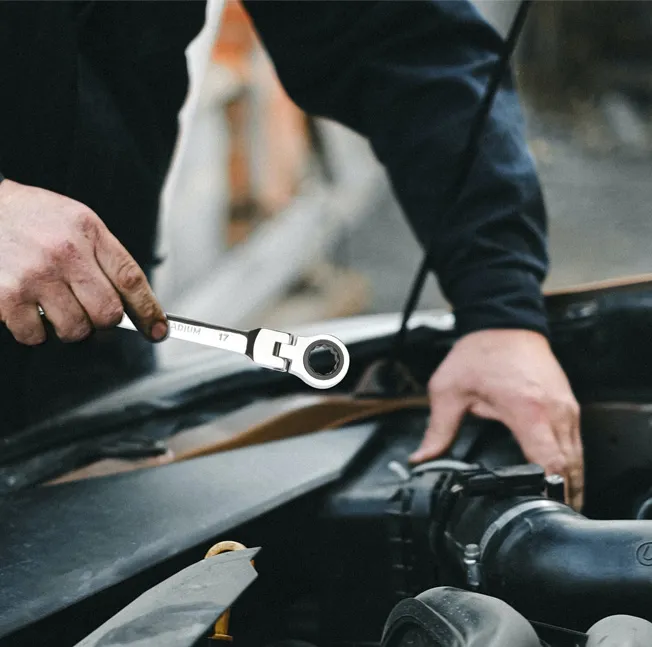Νοέ . 08, 2024 14:53 Back to list
hydraulic cylinder oil seal
Understanding Hydraulic Cylinder Oil Seals
Hydraulic cylinders are vital components in various industrial applications, serving as the power source for operations ranging from lifting heavy loads to controlling machinery. At the heart of these cylinders lies the oil seal, a crucial element that ensures the efficient functioning and longevity of hydraulic systems. This article delves into the importance of hydraulic cylinder oil seals, their types, and best practices for maintenance.
What Are Hydraulic Cylinder Oil Seals?
Hydraulic cylinder oil seals are mechanical components designed to prevent hydraulic fluid from leaking out of the cylinder while keeping contaminants from entering. These seals are typically made from materials such as rubber, polyurethane, or other elastomers that can withstand high pressure and varying temperatures. The primary function of an oil seal is to maintain the hydraulic pressure within the cylinder, ensuring that the system operates effectively and reliably.
Importance of Hydraulic Oil Seals
1. Preventing Fluid Leaks One of the most significant roles of oil seals is to prevent the hydraulic fluid from escaping the cylinder. Any leakage can lead to a drop in pressure, resulting in reduced efficiency or even failure of the hydraulic system.
2. Protecting Against Contaminants Hydraulic systems are often exposed to dirt, dust, and other contaminants that can damage internal components. Oil seals act as a barrier, preventing these foreign particles from entering the cylinder and causing wear or corrosion.
3. Maintaining Performance Properly functioning oil seals help maintain optimum performance levels of hydraulic cylinders. They ensure that the cylinders can generate and sustain the required pressure, enabling the machinery to perform its tasks effectively.
4. Extending Equipment Life By preventing leaks and contamination, oil seals contribute to the overall longevity of hydraulic systems. Regular maintenance and timely replacement of worn seals can significantly extend the life of hydraulic cylinders and the machinery they power.
Types of Hydraulic Cylinder Oil Seals
There are several types of oil seals used in hydraulic cylinders, each designed for specific applications
hydraulic cylinder oil seal

1. Lip Seals These are the most common type of oil seal. They have a flexible lip that presses against the cylinder wall, creating a tight seal. Lip seals are effective in preventing leaks and are suitable for most hydraulic applications.
2. U-Cup Seals Shaped like a U, these seals offer a larger sealing surface and are ideal for low-pressure applications. They can effectively handle high temperatures and provide excellent sealing capabilities.
3. V-Ring Seals These seals are used primarily to protect against contamination. They are not designed for high-pressure environments but are excellent at keeping dirt and debris out of the system.
4. Square Ring Seals Also known as O-rings, these seals are designed for a tight fit and are commonly used in various hydraulic applications. They are versatile and can accommodate a range of pressures and temperatures.
Maintenance and Best Practices
To ensure the longevity and efficiency of hydraulic cylinder oil seals, regular maintenance is essential. Here are some best practices
- Regular Inspection Frequently inspect the seals for signs of wear, cracks, or damage. Early detection can prevent costly repairs down the line.
- Keep Systems Clean Maintain cleanliness in hydraulic systems to avoid contaminating seals, which can lead to premature failure.
- Use Proper Installation Techniques Ensure seals are installed correctly to avoid deformation or damage during fitting. Follow manufacturer guidelines for installation procedures.
- Monitor Operating Conditions Keep an eye on temperature and pressure levels within hydraulic systems to avoid exceeding the operational limits of oil seals.
In conclusion, hydraulic cylinder oil seals play a pivotal role in the functionality and reliability of hydraulic systems. By understanding their importance, types, and maintenance, operators can ensure these systems operate at peak performance and longevity. Regular care and timely replacements of oil seals can lead to enhanced efficiency, reduced downtime, and extended machinery life.
-
Unlocking the Potential of Hydraulic Systems with Essential Sealing Solutions
NewsAug.06,2025
-
Unleash the Power of Your Hydraulic Systems with Our Premium Seal Kits
NewsAug.06,2025
-
Specialized Hydraulic Seal Kits for Breakers, Pistons, and Presses
NewsAug.06,2025
-
Revitalize Hydraulic Systems with Premium Repair and Seal Kits
NewsAug.06,2025
-
Fortify Your Cylinders with Premium Sealing Solutions
NewsAug.06,2025
-
Elevate Hydraulic System Reliability with Specialized Seal Kits
NewsAug.06,2025
-
TCN Oil Seal Metal Ring Reinforcement for Heavy Machinery
NewsJul.25,2025
Products categories
















